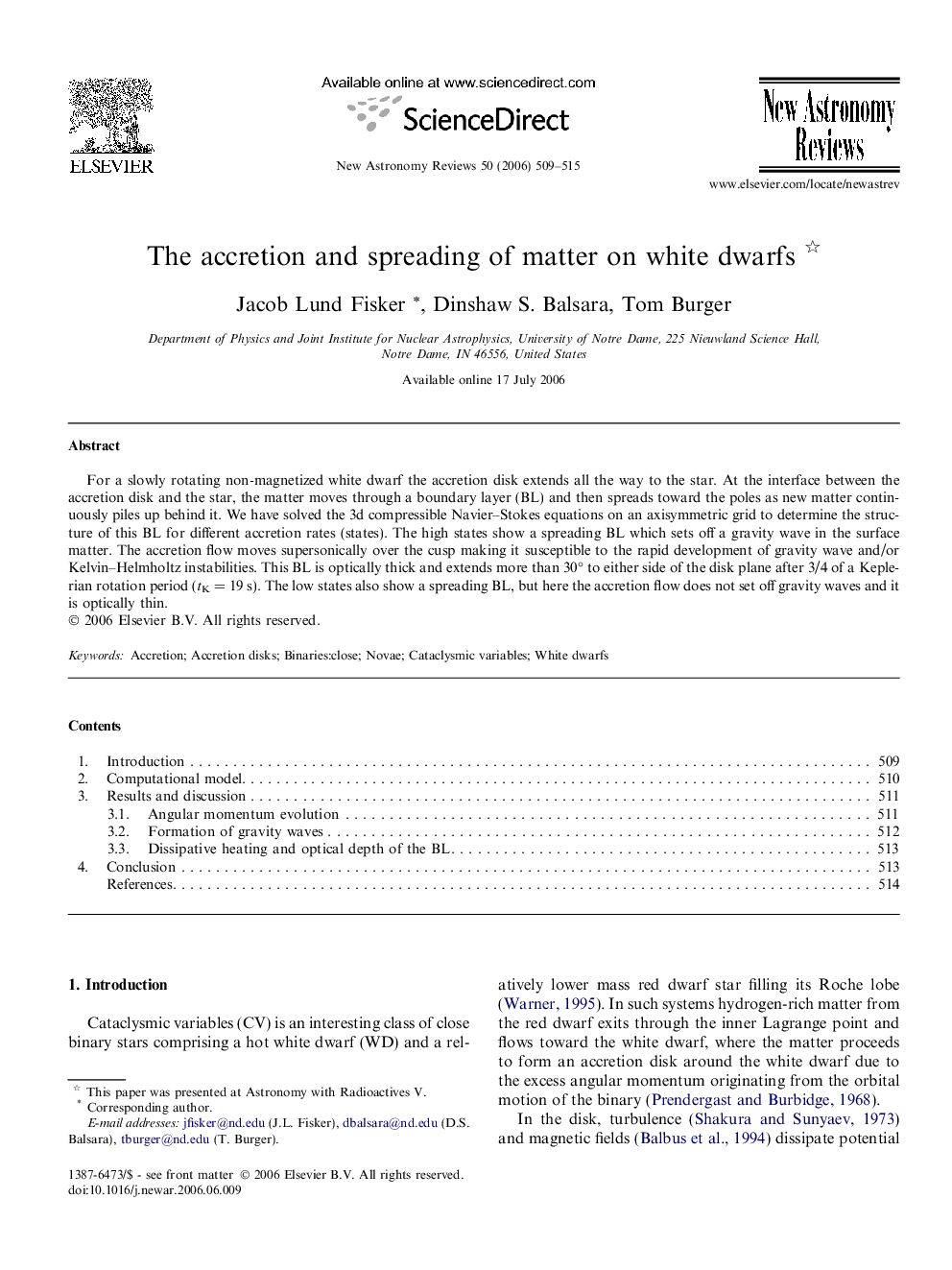| Article ID | Journal | Published Year | Pages | File Type |
|---|---|---|---|---|
| 1780476 | New Astronomy Reviews | 2006 | 7 Pages |
Abstract
For a slowly rotating non-magnetized white dwarf the accretion disk extends all the way to the star. At the interface between the accretion disk and the star, the matter moves through a boundary layer (BL) and then spreads toward the poles as new matter continuously piles up behind it. We have solved the 3d compressible Navier-Stokes equations on an axisymmetric grid to determine the structure of this BL for different accretion rates (states). The high states show a spreading BL which sets off a gravity wave in the surface matter. The accretion flow moves supersonically over the cusp making it susceptible to the rapid development of gravity wave and/or Kelvin-Helmholtz instabilities. This BL is optically thick and extends more than 30° to either side of the disk plane after 3/4 of a Keplerian rotation period (tK = 19 s). The low states also show a spreading BL, but here the accretion flow does not set off gravity waves and it is optically thin.
Related Topics
Physical Sciences and Engineering
Physics and Astronomy
Astronomy and Astrophysics
Authors
Jacob Lund Fisker, Dinshaw S. Balsara, Tom Burger,
